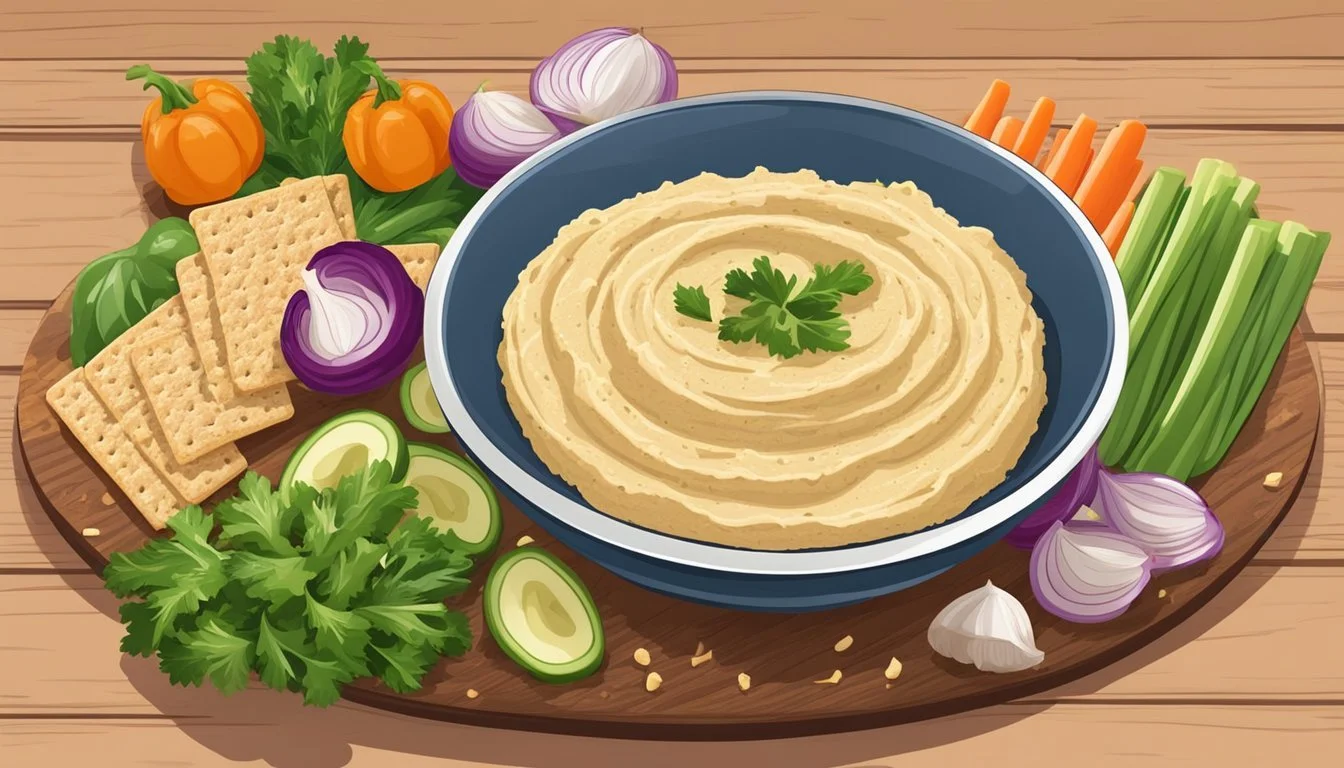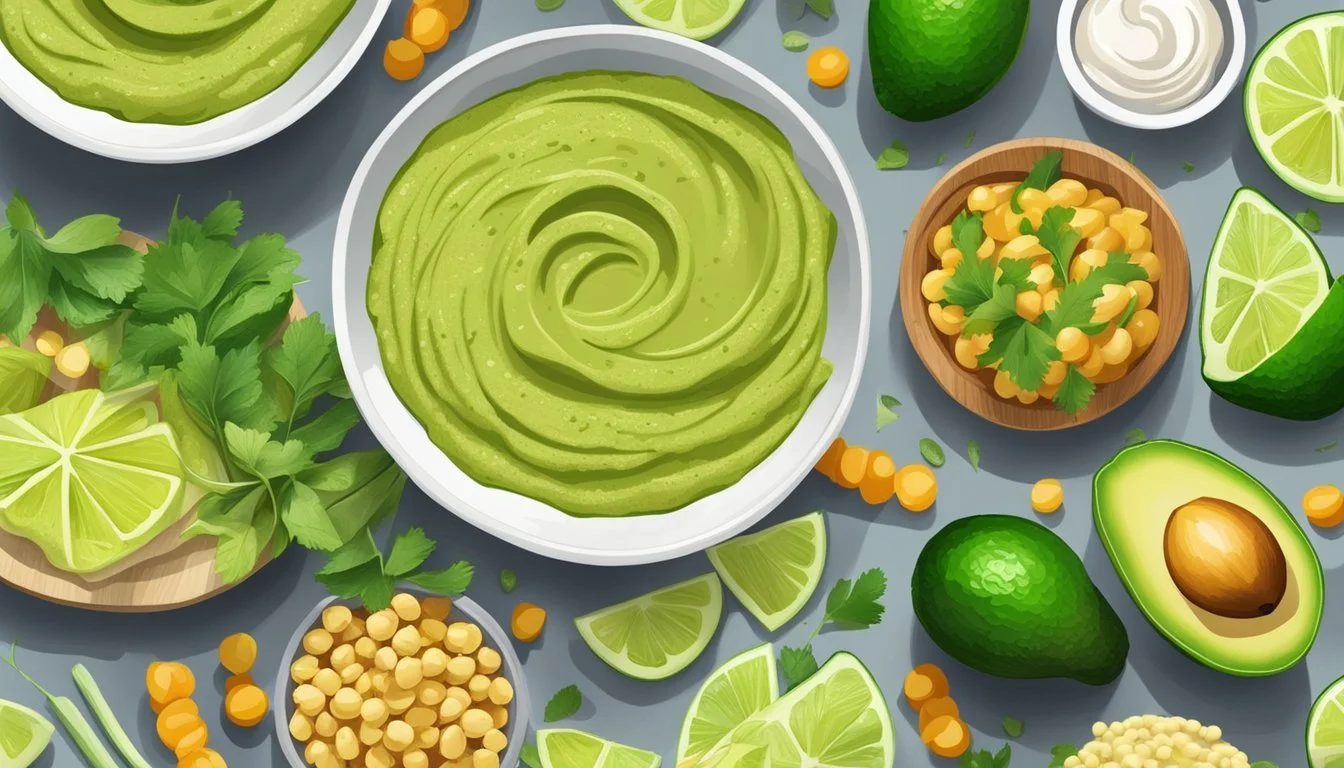3 Healthy Hummus Recipes for People with Diabetes
Delicious and Nutritious Options
Hummus is a versatile and nutritious option that fits well with the dietary needs of individuals managing diabetes. Made primarily from chickpeas, it offers a high-fiber and low-glycemic load food choice that can help maintain steady blood sugar levels.
For those looking to enjoy this delicious spread without compromising their health, there are several recipes that cater specifically to diabetic-friendly diets. These recipes focus on maximizing flavor while minimizing ingredients that could impact blood glucose levels.
1) Roasted Red Pepper Hummus
Roasted red pepper hummus is a nutritious and flavorful option for people with diabetes. This hummus combines the benefits of chickpeas, tahini, and roasted red peppers, providing a mix of fiber, healthy fats, and essential vitamins.
Start by roasting your red bell peppers until the skin is charred. Removing the skin enhances the smoothness of the hummus.
In a food processor, combine the roasted peppers with chickpeas, tahini, olive oil, lemon juice, and garlic. Blend until the mixture is creamy. Adjust the consistency by adding water if necessary.
Chickpeas are a great source of protein and fiber, which help regulate blood sugar levels. Red peppers add a sweet, smoky flavor without adding too many carbohydrates.
Avoid adding pine nuts if you want to keep the hummus low in calories. Sumac, cumin, or smoked paprika can be added to enhance flavor without increasing sodium content too much.
This roasted red pepper hummus pairs well with fresh vegetables or whole-grain crackers, making it a versatile snack or addition to meals. It’s flavorful, diabetic-friendly, and easy to prepare.
2) Garlic Parmesan Hummus
Garlic Parmesan Hummus is a flavorful twist on the classic hummus. It's perfect for people with diabetes, as it combines the health benefits of chickpeas with the rich flavor of roasted garlic and Parmesan.
To make Garlic Parmesan Hummus, start by roasting a head of garlic. Cut the top off to expose the cloves, drizzle with olive oil, and wrap it in aluminum foil. Bake at 375°F (190°C) for about 40 minutes until soft.
Once the garlic is roasted, allow it to cool slightly. Squeeze the garlic cloves out of their skins and add to a food processor. Combine with cooked chickpeas, tahini, lemon juice, olive oil, and grated Parmesan cheese.
Blend the ingredients until smooth, adding some reserved chickpea liquid if needed to reach the desired consistency. Season with salt and pepper to taste.
Serving this hummus with veggies or whole-grain pita chips makes for a nutritious and satisfying snack. The roasted garlic provides deep flavor without overwhelming the palate, while Parmesan adds a savory note that pairs well with the creamy chickpeas.
3) Avocado Lime Hummus
Avocado Lime Hummus is a flavorful and nutritious option for individuals with diabetes. This variant combines the creamy texture of avocado with the tanginess of lime, making it a delightful dip or spread.
The main ingredients are ripe avocado, chickpeas, lime juice, garlic, cumin, and olive oil. These components come together to create a smooth and rich hummus.
The addition of avocado provides healthy fats, which can help in managing blood sugar levels. Chickpeas offer fiber and protein, making this hummus a diabetes-friendly choice.
Simple to prepare, this hummus involves blending all ingredients until smooth. Adjust the consistency by adding a small amount of water if needed.
Serve with fresh vegetable sticks or whole-grain crackers for a health-conscious snack. Enjoy the bright, zesty flavors while benefiting from its nutritional value.
Nutritional Benefits of Hummus for People with Diabetes
Hummus provides several health benefits that are particularly advantageous for individuals managing diabetes. Key components include its low glycemic index, high fiber and protein content, and presence of healthy fats.
Low Glycemic Index
One of the primary benefits of hummus for diabetics is its low glycemic index (GI). Foods with a low GI score cause slower, steadier increases in blood sugar levels.
This means hummus helps in maintaining better blood sugar control. The main ingredient, chickpeas, has a GI of just 28-32. Combined with minimal added sugars, hummus becomes an even more attractive option for those needing glycemic control. This makes it easier to integrate hummus into a diabetes-friendly diet without the risk of major blood sugar spikes.
Rich in Fiber and Protein
Hummus is both high in dietary fiber and protein, which are critical in managing diabetes. A serving of hummus typically contains 2-3 grams of fiber and 2-3 grams of protein.
Fiber has several advantages, including reducing blood sugar spikes, improving digestion, and promoting a feeling of fullness. Protein helps in stabilizing blood sugar levels by slowing the absorption of carbohydrates. The combination of fiber and protein in hummus makes it a suitable snack for blood sugar management. Additionally, the satiety provided by these nutrients can aid in weight management, another crucial aspect for individuals with diabetes.
Healthy Fats
Hummus contains healthy fats primarily from ingredients like olive oil and tahini. These healthy fats are beneficial in supporting heart health, an important concern for diabetics.
Monounsaturated and polyunsaturated fats present in hummus can help reduce bad cholesterol levels and lower the risk of heart disease. Including healthy fats in the diet also helps in the absorption of fat-soluble vitamins. This nutritional profile helps in creating a balanced diet while providing essential nutrients that support overall health for those managing diabetes.
Key Ingredients to Include in Diabetic-Friendly Hummus
To make hummus suitable for people with diabetes, consider ingredients that promote stable blood sugar levels and provide essential nutrients. Notable components include chickpeas, olive oil, and specific flavor enhancers.
Chickpeas and Their Benefits
Chickpeas are the foundation of hummus. They boast a low glycemic index, which means they digest slowly, helping to prevent spikes in blood sugar.
Moreover, chickpeas are high in dietary fiber. This fiber aids in digestion and promotes a feeling of fullness, which is beneficial for weight management.
Additionally, chickpeas are a source of plant-based protein, which is important for maintaining muscle mass and overall health. They also contain essential vitamins and minerals such as iron, magnesium, and folate.
Olive Oil and Its Impact on Blood Sugar Levels
Olive oil is rich in monounsaturated fats, which are known to improve cardiovascular health by reducing bad cholesterol levels. These healthy fats also help in managing blood sugar levels by enhancing insulin sensitivity.
Extra virgin olive oil also contains antioxidants like polyphenols. These compounds may provide additional anti-inflammatory benefits.
Incorporating olive oil into hummus adds a smooth texture while contributing to a balanced diet. It’s important to use it in moderation, and high-quality olive oil is recommended for the best health benefits.
Diabetic-Safe Flavor Enhancers
Flavor enhancers such as garlic, lemon juice, and spices are key to making hummus delicious without adding sugar or unhealthy ingredients.
Garlic contains compounds like allicin, which have been researched for their potential blood sugar-lowering properties.
Lemon juice provides a zesty flavor while also supplying vitamin C and other antioxidants that can support the immune system.
Spices like cumin, paprika, and turmeric can offer robust flavors. Cumin, for example, is known for its digestive benefits, and turmeric has anti-inflammatory properties that might help manage diabetes-related complications.
A combination of these ingredients can make the hummus not only tasty but also beneficial for blood sugar management.





